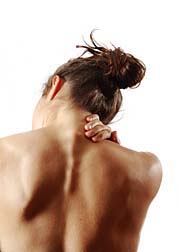After graduating I tried out a couple places which turned out to be less than ideal. Working in a condo with a physiotherapist turned out to be very slow and a bad set-up. Working at a new gym/wellness center was also very slow, but I loved my co-workers and the big bright space. I also tried working one day a week at a small Chiropractic clinic just two blocks from my house, but an unpredictable schedule and dingy work environment meant I eventually moved on.
We can't all work in a location like this...

I eventually found my place at a gorgeous and warm place in High Park where I now work with naturopathic doctors and other alternative health care practitioners in a great neighborhood. They haven't had an RMT in a while (they were very successful when they were there in the past however) so it seems its a matter of getting the word out and things should get rolling there.
Then I had an interview at an amazing multi-disciplinary rehabilitation clinic at Yonge and Davenport. Everything sounded fantastic but I would have to go through a second interview and I didn't know if I could even accept the job, what with my other two positions. Despite me regretfully turning down the second interview, the owner pursued me and said just to come in and chat.
Talking with her helped me put everything in perspective. What do I want out of my career? A chance to grow and learn, to be challenged, to work as a multi-disciplinary team, to help people reach their goals, and yes, to be able to pay my rent!
I realized that as much as I had loved my first job at a gym, I just couldn't achieve those goals there. So when I was offered the other job, I took it. I was sad to leave but it seemed to be the best decision. The new place offers an amazing opportunity to work with the owner who has 31 years of experience and regularly works with Olympians, and some other truly incredible therapists (physio, acupuncture and pilates) in a wonderful system where everyone works together to help the patient get back on track. It's the ideal inter-disciplinary environment. That, and it's crazy busy.
If you'd like to know the names of these places and see their websites, check out all the details on my website! www.lauranewton-rmt.com


